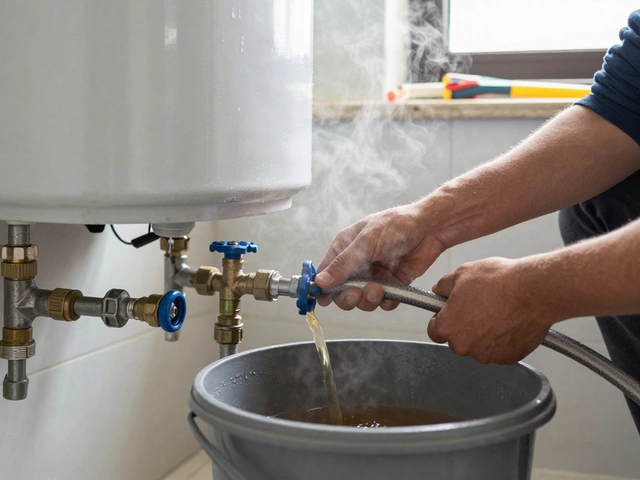Diagnose Boiler Problems in Simple Steps
If your heating stops working, you don’t have to guess what’s wrong. With a few basic checks you can spot most boiler issues before calling a technician. This guide shows you how to run a quick diagnosis, understand common signs, and decide when it’s safe to fix it yourself.
Common Signs Your Boiler Needs Attention
First, notice the symptoms. A boiler that won’t fire up, makes strange noises, or leaks water are clear red flags. Even a slight drop in water pressure or an odd smell can point to a bigger problem. Write down when the issue started and what you heard or felt – that information helps the repair person work faster.
Here’s a quick checklist:
- No heat or hot water: Could be a thermostat issue, a broken pump, or a failed ignition.
- Clicking or hissing sounds: Air trapped in the system or a failing valve.
- Leaks around the pipework or the boiler body: Look for rust or corrosion that might need a seal.
- Low pressure gauge (below 1 bar): Often a simple refill solves it, but recurring drops suggest a leak.
- Odd smells (burnt or metallic): Might be a gas leak – turn off the boiler and call a professional immediately.
Step‑by‑Step Boiler Diagnosis
Now, walk through these practical steps. You’ll need a flashlight, a flat‑head screwdriver, and the boiler’s user manual.
- Check the power supply: Make sure the breaker isn’t tripped and the switch on the boiler is on.
- Reset the boiler: Most models have a reset button. Hold it for 10 seconds, then wait for the system to restart.
- Inspect the pressure gauge: If it reads below 1 bar, locate the filling loop, open the valve briefly, and watch the gauge rise to about 1.5 bar.
- Look for error codes: Modern boilers display a code on the screen. Write it down and check the manual for what it means.
- Listen for the pump: When the boiler fires, you should hear a steady hum. A silent pump often means it’s stuck or needs replacement.
- Examine the vent and flue: Ensure they’re clear of debris. A blocked vent can cause the boiler to shut down for safety.
- Check for water leaks: Dry any wet spots and tighten obvious loose fittings, but don’t overtighten brass joints.
If any step reveals a broken part – like a cracked pressure valve or a burnt-out igniter – it’s time to call a qualified engineer. Trying to fix gas‑related components yourself is dangerous.
When you do call a professional, give them the checklist and any error codes you recorded. That speeds up the visit and may lower the cost, because the technician won’t need to repeat basic tests.
Regular maintenance keeps most of these problems at bay. A yearly service, cleaning the heat exchanger, and flushing the system can extend a boiler’s life well beyond the average 10‑15 years.
Bottom line: a quick visual check, a few button presses, and a glance at the pressure gauge can tell you whether the issue is DIY‑fixable or needs a pro. Keep this guide handy, and you’ll spend less time shivering and more time enjoying a warm home.
8 November 2024
·
0 Comments
Diagnosing a boiler problem can seem daunting, but with some foundational knowledge, most homeowners can identify the issue themselves. This article offers practical tips for spotting common boiler problems, from strange noises to inefficient heating. Understanding how your boiler works and knowing what signs to look for can shorten repair times and reduce costs. With the right approach and some handy advice, keep your home warm and safe all year round.
Read more






